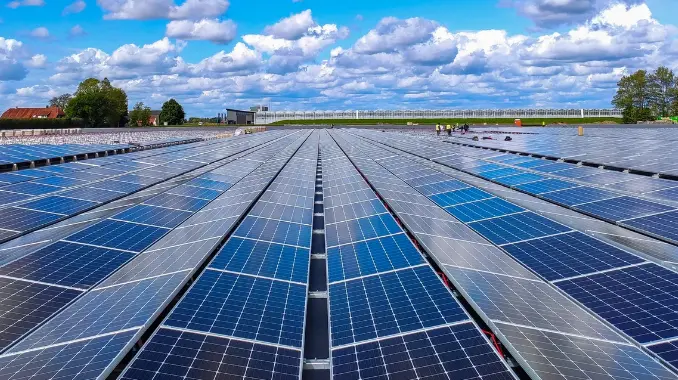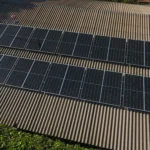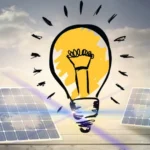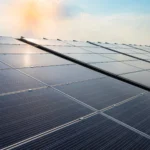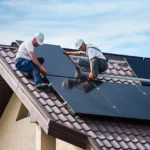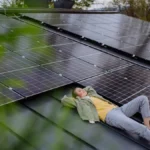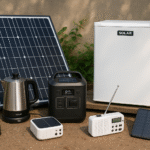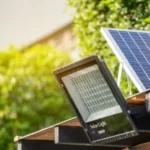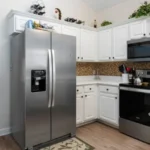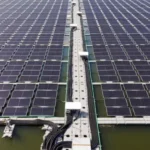Imagine your solar panels working double-time, capturing sunlight from both the top and the bottom. That is not science fiction; it is what bifacial solar panels are designed to do. Whether you are a homeowner looking to cut utility bills or a business owner seeking greener energy, bifacial technology could be a game-changer.
In this guide, we will explore how bifacial panels work, their pros and cons, real-world performance tips, and whether they are the right fit for your roof, carport, or backyard.
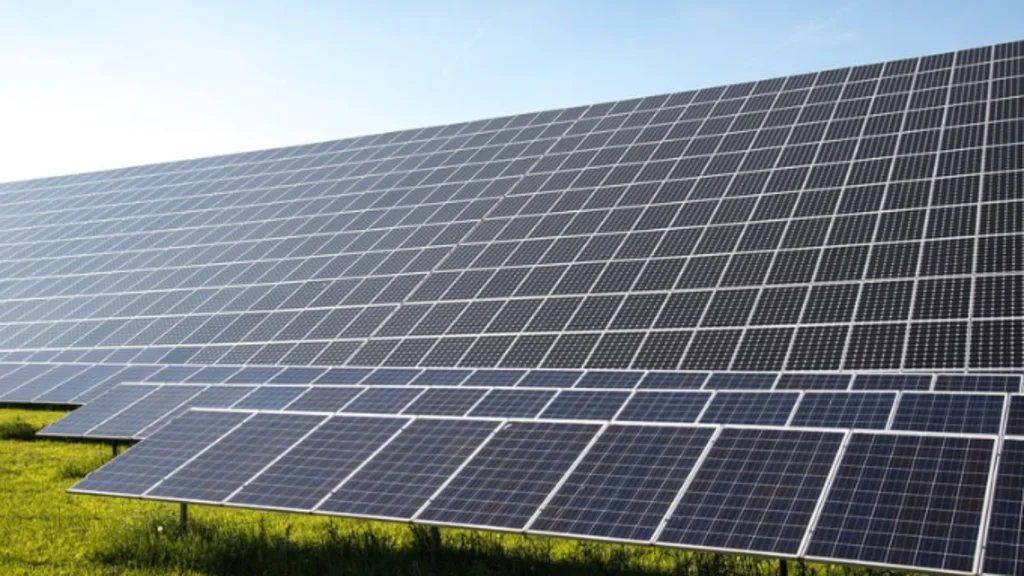
What Are Bifacial Solar Panels?
Unlike traditional monofacial panels, which absorb sunlight only from the front side, bifacial solar panels generate electricity from both sides. The front collects direct sunlight, while the back captures reflected light, also called “albedo,” from surfaces like concrete, gravel, white membrane roofs, or even snow.
Key Features:
- Transparent backsheets or dual glass construction
- Frameless or with minimal aluminum frames
- Efficiency gains of 5 to 30 percent depending on installation surface
- Best paired with high-reflectivity environments such as white rooftops or snowy areas
Why Homeowners Are Considering Bifacial Panels in 2025
As solar adoption increases across residential areas, homeowners are seeking smarter, space-efficient technologies. Bifacial panels align with this demand by providing more energy per square foot, which is especially useful on limited roof space or in ground-mount setups.
Real Tip From the Field
Last winter, a homeowner I worked with in Colorado upgraded their backyard pergola with bifacial panels. The snow-covered ground boosted their panel output by nearly 15 percent on sunny days without adding any extra panels.
You can aslo visit here : Solar energy companies.
How Bifacial Panels Improve Output
You might wonder how much more energy bifacial panels can produce compared to traditional ones.
Typical Efficiency Gains
- White TPO roof: 10 to 20 percent boost
- Gravel or concrete: 5 to 15 percent boost
- Grass or soil: 0 to 5 percent (minimal reflection)
- Snowy ground: Up to 30 percent boost
Bifacial Gain is calculated as:
Bifacial Gain (%) = (Rear-side output / Front-side output) x 100
However, you will only see high returns if the installation is optimized for reflective surfaces and spacing, usually through tilted or raised setups.
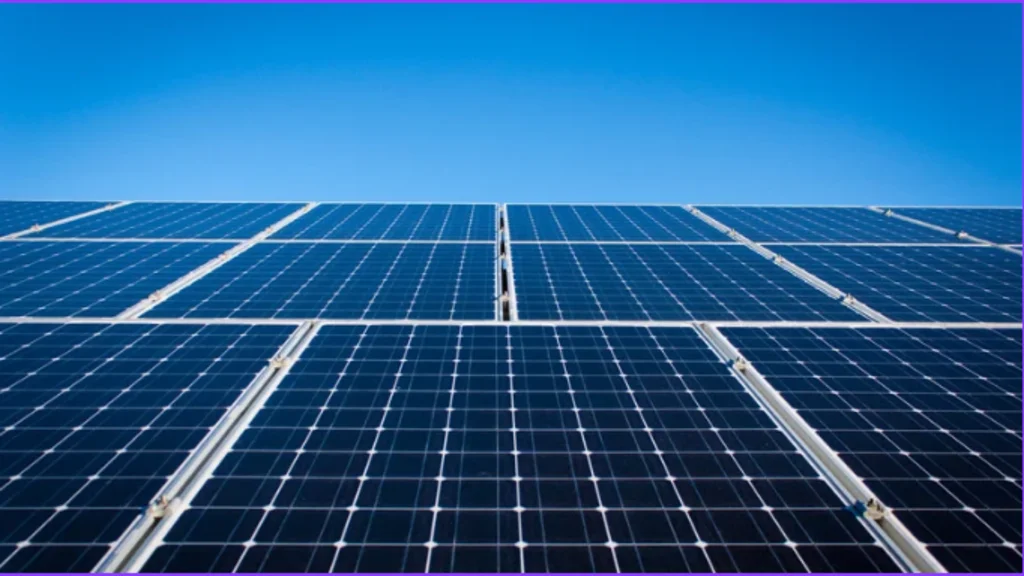
Bifacial vs. Monofacial: What Is the Catch?
While bifacial panels offer more output, they also come with unique considerations:
| Feature | Bifacial Panels | Monofacial Panels |
| Energy Output | Higher with proper installation | Standard |
| Cost | 5 to 15 percent more expensive upfront | More affordable |
| Weight | Slightly heavier (dual-glass models) | Lighter |
| Ideal Surface | Reflective (concrete, snow, white TPO) | Any rooftop |
| Maintenance | Similar cleaning needs | Easier in some cases (no rear access) |
Installation Considerations: Not All Roofs Are Equal
To get the most from bifacial panels, your installer should:
- Elevate the panels for rear-side exposure (6 to 24 inches of clearance)
- Choose racking that avoids shading the rear side
- Avoid dark rooftops or low-albedo surfaces
- Space panels to prevent shadow overlap
Installer Insight
On flat commercial roofs, we often recommend tilt-up racks to allow reflected light underneath. For residential homes, bifacial panels work best on pergolas, carports, and awnings.
You can also click here : How do solar erray work.
Smart Inverter and Battery Pairing for Bifacial Systems
Your bifacial system will generate more power, so it is vital your inverter and battery setup can handle the extra input.
Smart Inverter Tips:
- Use string inverters with MPP tracking for front and rear voltage variance
- Consider hybrid inverters if integrating battery storage
- Troubleshoot overheating by ensuring ventilation and shading sensors
Battery Storage Advice:
- Choose lithium-iron phosphate (LiFePO4) batteries for longer cycle life
- Oversize slightly to store extra power from bifacial gain
- Monitor battery health during seasonal output peaks
Pro Tip
One client noticed battery overcharging alerts in mid-summer due to unexpected rear-side gain. A firmware update on the inverter’s charging algorithm fixed it, which shows how important it is to keep your firmware current.
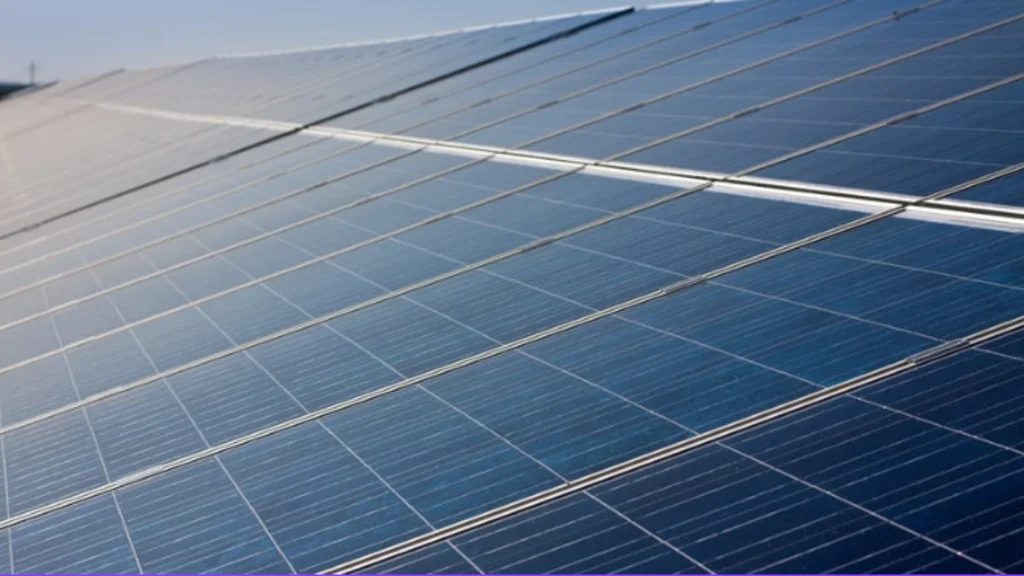
Maintenance: Cleaning Matters More Than You Think
Bifacial panels are just as susceptible to dirt, bird droppings, and pollen buildup on both sides. Studies from NREL show up to 20 percent output loss from soiling if panels are not cleaned regularly.
Best Practices:
- Clean panels every 2 to 3 months (more during pollen season)
- Use soft brushes or water with no soap or harsh chemicals
- Do not neglect the rear surface if accessible (especially in carport or ground-mount systems)
- Schedule professional checks annually
User Insight
“I saw a noticeable boost, about 12 percent, after washing the underside of my bifacial panels on my patio canopy. Never realized how much dirt built up back there.” — Luis D., a homeowner in Arizona
EV Charging with Bifacial Panels
If you drive an electric vehicle, bifacial solar panels can make EV charging even more efficient. When installed over a driveway or detached garage, bifacial panels serve double duty as both shade and energy generators.
Charging Station Recommendations:
- Use a Level 2 EV charger with a smart load manager
- Prioritize daytime charging to use solar power directly
- Monitor charging efficiency via apps or smart meters
Bonus Tip
Some EV chargers now offer solar-priority charging modes, letting your car charge only when solar is actively generating. This minimizes grid reliance.
Are Bifacial Solar Panels Right for You?
They might be if you meet any of these conditions:
- You are building a new home or carport and want premium performance
- Your property has reflective surfaces such as white membrane, concrete, gravel, or snow
- You are aiming for net-zero energy or want to maximize ROI in a limited space
- You are installing a ground-mount system or a backyard solar pergola
But if your roof has dark shingles, minimal clearance, or shading issues, monofacial may still offer better cost-effectiveness.
Real-World Performance Stats
According to a study by LONGi and PV Magazine:
- Bifacial modules showed a 6.2 percent average gain in a simulated white gravel environment over 12 months
- In snowy Canadian regions, gain increased to nearly 27 percent during peak reflection months
- In tropical zones with low albedo, gains were as low as 2 to 4 percent
Always match the technology to your climate and design.
Trust the Data, Not Just the Hype
While some manufacturers boast “up to 30 percent more power,” your actual gain depends heavily on surface albedo, tilt, spacing, and system design.
Trusted Sources for Further Reading:
- NREL: Bifacial PV Performance (nrel.gov)
- Energy.gov Solar Basics (energy.gov)
- LONGi Technical Whitepaper on Bifacial Modules (longi.com)
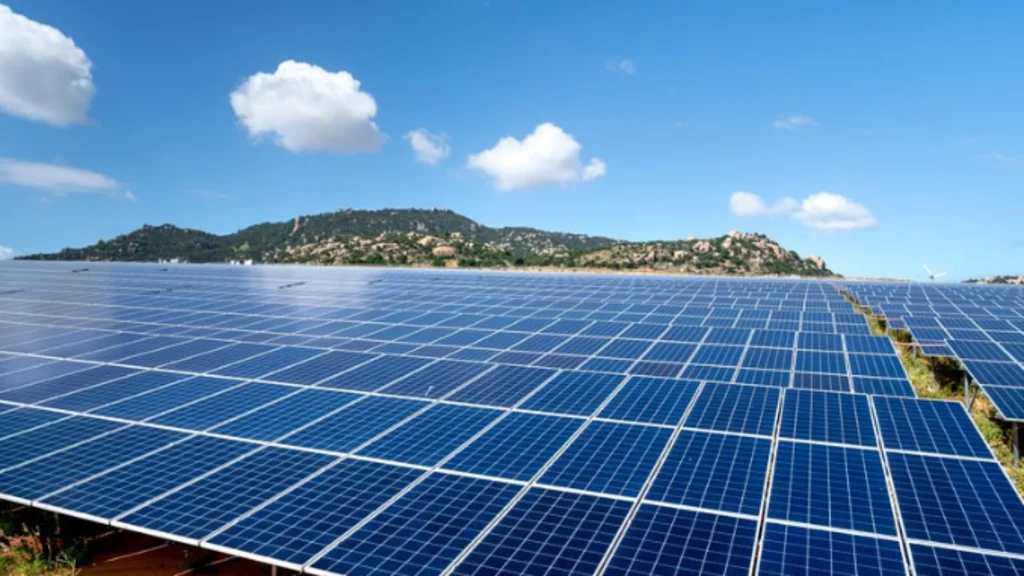
Final Thoughts: Small Upgrade, Big Payoff
Bifacial solar panels offer a smart upgrade for those seeking higher efficiency and long-term savings, especially in reflective or open environments. With the right design and maintenance, you could see energy gains that accelerate your payback period.
Take Action Now
If your panels have not been cleaned in over 3 months, you could be losing 10 to 20 percent of your energy output. Book a system checkup today and start maximizing your solar investment.
Frequently Asked Questions
Is a bifacial solar panel better?
Bifacial solar panels can be better than monofacial panels in the right environment. They generate electricity from both sides, offering 5 to 30 percent more output when installed above reflective surfaces like white rooftops or snow. However, their performance depends on the installation setup, surface albedo, and tilt.
What is bifacial in solar panels?
Bifacial refers to solar panels that absorb light on both the front and rear sides. The front collects direct sunlight, while the back captures reflected light from the ground or surrounding surfaces, increasing the overall energy generation potential.
What is the disadvantage of a bifacial solar panel?
The main disadvantages of bifacial solar panels include a higher upfront cost, slightly heavier weight due to dual-glass construction, and the need for specific mounting conditions to take advantage of rear-side gain. If installed on non-reflective surfaces or shaded rooftops, the additional cost may not be justified.
Which solar panel is better, mono or bifacial?
It depends on your installation site. Monofacial panels are more affordable and work well in typical rooftop installations. Bifacial panels are better suited for carports, pergolas, or ground-mount systems with reflective surfaces where their extra output can be maximized.

